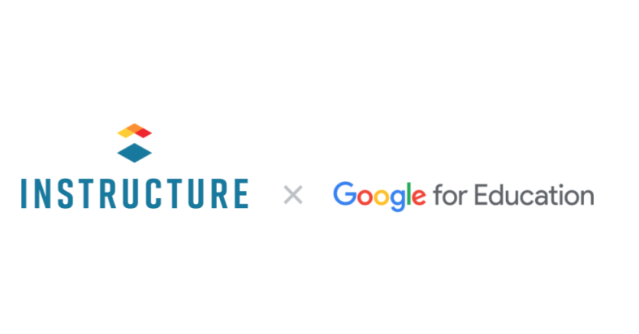
The way that we assess learning achievements is changing. Our current system of grouping learners into age-banded classes and ranking their performance using broad, letter-grade categories is becoming increasingly outdated. Letter grades have little value to learners, who can still fail to master key learning objectives despite getting good grades. Letter grades also have little or no meaning to employers looking for a more granular understanding of a candidate’s mastery of specific skills. To better serve learners, we need to help them master necessary concepts and demonstrate mastery in the context of a shared system of skills and competencies.
With this in mind, forward-looking institutions are beginning to explore Competency-Based Education, based on open standards which allow us to create a shared, universal language to allow virtually any learning achievement to be understood by other organizations. Using these open standards, the achievements of learners will soon be transferable between institutions and understandable in the context of employment and lifelong learning opportunities.
The work on this new digital environment for learning began about seven years ago and is proceeding quite quickly.
A Very Brief History
In early 2011, the white paper “Open Badges for Lifelong Learning” attracted significant attention as part of the Digital Media and Learning Competition. Soon after, Arne Duncan, then U.S. Secretary of Education, launched the Digital Badges for Learning Competition. This competition resulted in an estimated 300+ non-profit organizations, government agencies, and informal learning entities getting involved in digital badging.
The momentum continued. In 2012, The Mozilla Foundation released an open-source Open Badging Infrastructure which served as the seed for numerous projects. The following year, over 100,000 badges were issued as part of the Chicago Summer of Learning. During the Summit to Reconnect learning in 2014, a non-profit organization called the Badge Alliance was launched to help coordinate the work of the rapidly growing Open Badge ecosystem.
Fast Forward a Few Years
To date, it is estimated that over 43 million badges have been issued worldwide. Issuing organizations can be large or small - even school systems and individual teachers have begun issuing digital badges across various platforms. Schools and organizations have found that they can now issue digitally verifiable credentials to their students, staff, and users to represent learning achievements of many kinds. Teacher professional development is a common use case, as well as preparing young people to enter the workforce.
The Open Badges standard allows learners to understand and share their learning achievements from formal, informal, and self-directed settings across multiple platforms using a common language. Open Badges make almost any learning experience valuable in the right situation. Everything a person learns can be used to create a rich portrait of them as a learner, a picture that the learner controls.
Benefits of an Open System of Credentialing
Even if teachers are working with younger children, there are still benefits to creating a digital portrait of their learners. Take, for example, a student who plays video games. This example learner has earned in-game achievement badges for flight simulator games and goes to air shows where he or she gets digital badges for participation.
While on the surface, these badges might be seen to have little relevance to their education, they can be entirely meaningful. The average high school student gets less than an hour of face-time with a school counselor. What are the chances that our example youth’s interest in aircraft will surface in that meeting, where it might be used to help motivate the learner?
With this data, a counselor could have this type of discussion: “Did you know you could work on airplanes for a living? Did you know you could fly airplanes for a living? Or even design them? Let me show you how.”
So, we can see that this seemingly trivial information can be made useful to a learner during the most impressionable part of that young person’s life. We can now use a learner’s own interests for their benefit, which is something we couldn’t do before. We didn’t have the information or a way to understand different kinds of learning. Badges can help solve one of the most fundamental challenges of education – how do we identify students’ interests and motivate them to learn?
The important thing to understand about badges is that they might be analyzed in contexts that are not immediately apparent to the issuer. Together, a collection of badges paints a rich portrait of a learner. This portrait can help educators understand students’ learning progress in an immediate and granular way. And it can help students track their own learning achievements in school and life - and share those achievements with colleges and potential employers.
Future Benefits
As colleges and universities are redefining their value in a global marketplace, badges will allow them to award more granular credentials that are valuable to both students and employers. Currently, students who do not complete their programs have little to show for their work, even if they have completed 99% of their requirements. There’s also no way to describe informal learning achievements alongside those that arise from more formal environments.
Badges not only benefit learners as they enter the workforce but will also enhance the value of higher education institutions that may be struggling to show value in a world of increasing tuition and rising student debt.
Companies will hire employees globally in the coming years, using verifiable skill sets to identify their remote workforces. Learners will take advantage of new learning pathways, helping them aggregate skills from many learning sources and allowing them to build a complete profile of their skills and achievements.
This is an exciting time for education - we’re seeing a transformation from a successful but antiquated letter-grade system to a modern credentialing system that better serves learners and their future needs. Learners, schools, and businesses will enjoy the benefits of an open system that accurately describes learning achievements and matches them to the skills needed in the workforce.
This post originally appeared in STEM Magazine in May 2018.
Related Content
 canvas-offline-blog-thumbnail-2024.jpg
canvas-offline-blog-thumbnail-2024.jpgBlog Articles
 3.png
3.pngBlog Articles
 googlexinst.png
googlexinst.pngBlog Articles
